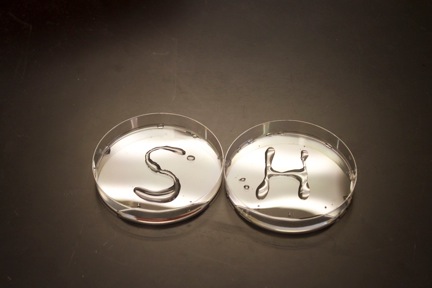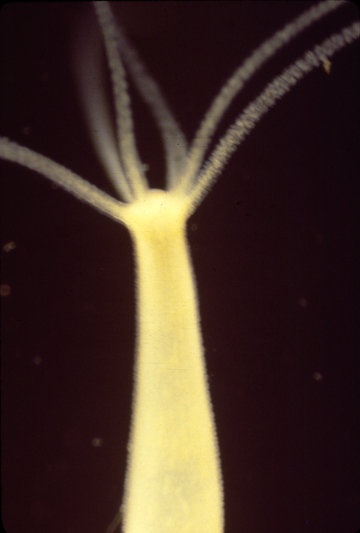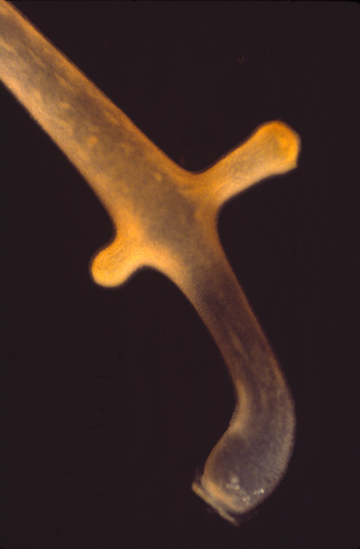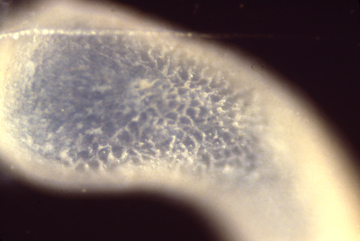April 11, 2014
First slide shown in the lecture:

The letters S and H were painted on an ordinary petri dish with sulfuric acid,
which modifies the surface of the plastic and makes it wettable. Water accumulates on these areas.
Regeneration
* Mammal Liver: Is there a self-inhibition mechanism?(Why don't they regenerate even without amputation?)
* Constant renewal of outer layers of skin
-
(What method speeds this up when outer layers are pulled off?)
(Does this same method slow renewal when skin is thick?)
" Chalone Hypothesis" of self-inhibiting skin chemical.
(How could you use a bioassay to identify the chemical structure?)
(And why do you think these bioassays failed to find a specific chemical?
(What lessons can we learn from the history of primary induction)
(Lens is replaced by redifferentiated iris (pigmented retina)
*Sponge anatomy is constantly replaced anyway
* Hydra anatomy is constantly replaced anyway
drawing of a hydra (shown in the lecture; see video for discussion)
drawing of hydra budding (also shown in the lecture; see video)
Hydra photographs:

hydra head

hydra trunk with buds

hydra cells
animation of hydra budding (the video that should have been shown in the lecture)
* Planaria anatomy is constantly replaced anyway
* Salamander leg, jaw, neural retina & several other parts. But not their liver!
* Frog legs regenerate when very young
(Human finger tips can regenerate when young - but we decided not to do this experiment in the laboratory, despite one student's outstanding pocket-knife & pliers)
* Salamanders don't just regenerate legs that are removed, they also intercalate extra versions of intermediate anatomy.
Can you invent a chalone-like chemical de-inhibitor that explains branching?
Does the branching have the same mechanism as regeneration? (Or does it matter that what is being replaced isn't actually missing?)
If stem cells can replace organs, will they depend on normal mechanisms of healing and regeneration?
Which is the greatest obstacle to regeneration?
[& What do many people believe about this?]
-
a) Lack of enough undifferentiated cells.
b) Lack of cell movements for other cells to fill in gaps.
c) Lack of guidance mechanisms to guide cells back to locations.